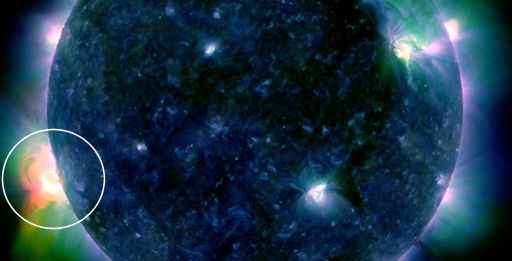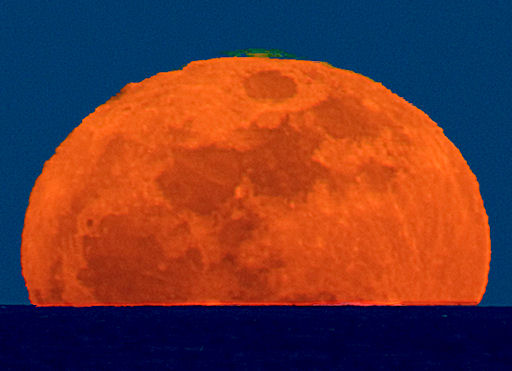Metallic photos of the sun by renowned photographer Greg Piepol bring together the best of art and science. Buy one or a whole set. They make a stellar gift. | | |
AURORA SEASON: Today is the first day of northern spring. Winter ended on March 20th at 7:21 pm EDT when the sun crossed the equator heading north. This event has special significance for readers of spaceweather.com because, for reasons not fully understood, spring is aurora season. Get your geomagnetic storm alerts here.
HERE COMES TROUBLE? A big sunspot is emerging over the sun's southeastern limb, and it is crackling with activity. NASA's Solar Dynamics Observatory recorded a surge of extreme ultraviolet radiation from the sunspot's magnetic canopy on March 21st:

This appears to be the return of old sunspot 1165, last seen in early March when it formed on the sun's southwestern limb. Since then it has been transiting the far side of the sun, apparently growing in size and restlessness. The potential for trouble will become more clear in the hours ahead as the active region emerges in full. Stay tuned.
SUPER LUNAR GREEN FLASH: With the moon extra-close on March 19th, sky watchers got a rare chance to see if lunar terrain is really made of green cheese. Sure enough, many people witnessed a verdant fringe atop the rising lunar disk. John Stetson sends this example from Cape Elizabeth, Maine:

"This photo is a very close approximation of how the Moon looked at the eyepiece of my telescope," says Stetson. "The orange-colored Moon was definitely topped with green."
Case closed?
"No," says atmospheric optics expert Les Cowley, "this is not proof that the Moon is made of green cheese! These green flashes are the result of a temperature inversion, abnormally warm air lying over colder air. The Moon’s rays are bent when they pass between the air layers and their colors are separated to make the mock-mirage flash."
Browse the links for more lunar green: from Malcolm Park of Whitby Ontario, Canada; from Gary A. Becker of Bethlehem, PA
March 2011 Aurora Photo Gallery
[previous Marches: 2010, 2009, 2008, 2007, 2006, 2005, 2004, 2003, 2002]
Potentially Hazardous Asteroids (
PHAs) are space rocks larger than approximately 100m that can come closer to Earth than 0.05 AU. None of the known PHAs is on a collision course with our planet, although astronomers are finding
new ones all the time.
On March 21, 2011 there were 1204 potentially hazardous asteroids.
Notes: LD means "Lunar Distance." 1 LD = 384,401 km, the distance between Earth and the Moon. 1 LD also equals 0.00256 AU. MAG is the visual magnitude of the asteroid on the date of closest approach. | | The official U.S. government space weather bureau |
| | The first place to look for information about sundogs, pillars, rainbows and related phenomena. |
| | Researchers call it a "Hubble for the sun." SDO is the most advanced solar observatory ever. |
| | 3D views of the sun from NASA's Solar and Terrestrial Relations Observatory |
| | Realtime and archival images of the Sun from SOHO. |
| | from the NOAA Space Environment Center |
| | the underlying science of space weather |
| | for out-of-this-world printing and graphics |

